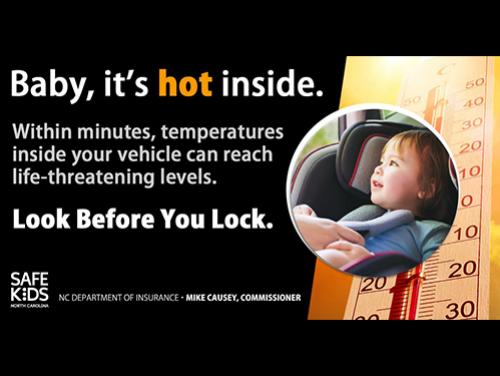Editorial: Take steps to avoid leaving a child in a hot vehicle
Take time to develop a few prevention habits to prevent pediatric vehicular heatstroke

This editorial is the opinion of Gilroy Life
Summertime is a fun-in-the-sun time for South Valley families. But there lurks in the heat the potential for a horrible tragedy: pediatric vehicular heatstroke (PVH) — the death of a child left in a hot car.
The nonprofit child safety organization Kids and Car Safety reports more than 1,000 children have died in hot cars since 1990. In the United States each year, an average of 39 children die of hyperthermia when left too long in a hot vehicle.
The organization states that most of these PVH deaths are accidental, with nationally about 53 percent caused when the child is forgotten and left unattended in vehicles. About 26 percent of hot car-related deaths happen when a child gains access to an unlocked vehicle and 20 percent of the deaths occur when a child is knowingly left in a vehicle.
Because of their small size, children are at a higher risk for heatstroke as their body temperatures can rise three to five times faster than an adult’s body. About two-thirds of these deaths happen on a hot summer day (according to data from noheatstroke.org). With the air-conditioner turned off, the temperature in a vehicle can increase in 10 minutes up to 20 degrees. And it will continue to rise. Even rolling down a window or leaving it open will do little to help alleviate the heat in a vehicle, according to the National Highway Traffic Safety Administration.
A family in the South Valley region faced the tragic loss of life of an infant child two decades ago when the father accidentally left his 5-month-old son in the backseat of a hot car. The 25-year-old San Martin man forgot the child was still in the vehicle as he spent time watching anime cartoons. When the man returned to his car three hours later to go out for some food, he discovered the baby dead. Although ambient air temperature was in the 80s that afternoon, temperatures in the car most likely had reached 120 degrees, according to the experts testifying in the trial.
 The man was convicted of involuntary manslaughter. With leniency from the court, he did not serve jail time but went on formal probation for four years and did 500 hours of community service.
The man was convicted of involuntary manslaughter. With leniency from the court, he did not serve jail time but went on formal probation for four years and did 500 hours of community service.
“We should not lose sight of the fact that the pain and suffering transcends the family and affects the community as a whole …” the judge said in his sentencing.
Here are some safety tips from the National Highway Traffic Safety Administration’s website everyone can use to help prevent PVH deaths:
- Never leave a child in a vehicle unattended — even if the windows are partially open or the engine is running, and the air conditioning is on.
- Make it a habit to check your entire vehicle — front and back — before locking the door and walking away. Train yourself to Park, Look, Lock, or always ask yourself, “Where’s Baby?”
- Ask your childcare provider to call if your child doesn’t show up for care as expected.
- Place a personal item like a purse or briefcase in the back seat, as a reminder to look before you lock. Write a note or place a stuffed animal in the passenger’s seat to remind you a child is in the back seat.
- Store car keys out of a child’s reach and teach children that a vehicle is not a play area.
 And if you notice a child left alone in a car that appears to be in danger from hyperthermia, you can take action. You are legally allowed to break into a car to save a child’s life — or elderly person or pet. A California law that went into effect last year lets people rescue a child from a hot car without the worry of being found civilly or criminally liable for property damage or trespassing.
And if you notice a child left alone in a car that appears to be in danger from hyperthermia, you can take action. You are legally allowed to break into a car to save a child’s life — or elderly person or pet. A California law that went into effect last year lets people rescue a child from a hot car without the worry of being found civilly or criminally liable for property damage or trespassing.
Pediatric vehicular heatstroke deaths are 100 percent preventable. Take time to develop a few prevention habits so that you can prevent family tragedies on hot summer days and throughout the rest of the year.
